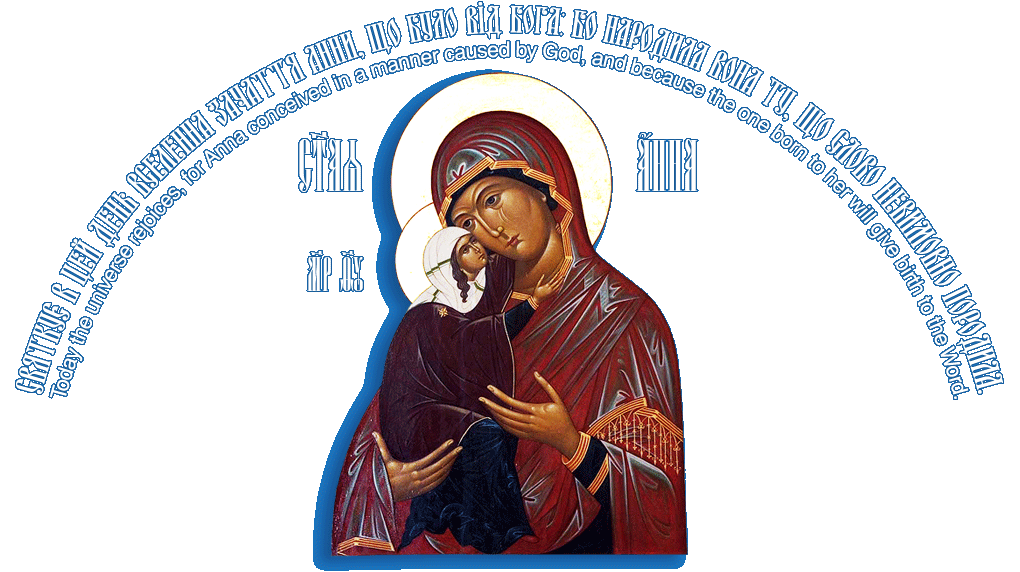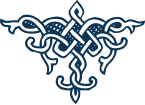The Symbolism of the Eastern Orthodox Marriage Service
Ephesians 5:28-32
So ought men to love their wives as their own bodies. He that loves his wife loves himself.
For no man ever yet hated his own flesh; but nourishes and cherishes it, even as the Lord the church:
For we are members of his body, of his flesh, and of his bones.
For this cause shall a man leave his father and mother, and shall be joined unto his wife, and they two shall be one flesh.
This is a great mystery: but I speak concerning Christ and the church.
До Ефесян 5:28-32
Чоловіки повинні любити дружин своїх так, як власні тіла, бо хто любить дружину свою, той любить самого себе.
Бо ніколи ніхто не зненавидів власного тіла, а годує та гріє його, як і Христос Церкву,
бо ми члени Тіла Його від тіла Його й від костей Його!
Покине тому чоловік батька й матір, і пристане до дружини своєї, і будуть обоє вони одним тілом.
Ця таємниця велика, а я говорю про Христа та про Церкву!
The Symbolism of the Eastern Orthodox Marriage Service
“Just as God blessed the first family, commanding Adam and Eve to be fruitful and multiply, so the Church today gives its blessing to the union of man and woman. Marriage is not only a state of nature but a state of grace. Married life, no less than the life of a monk, is a special vocation, requiring a particular gift of the Holy Spirit; and this gift is conferred in the sacrament of Holy Matrimony.”
— Bishop Kallistos Ware
The marriage ceremony of the Orthodox Church is steeped in symbolism which proclaims that as husband and wife are crowned to each other, “the two become one flesh”. Physical actions and images are signs of the spiritual realities of marriage.
The rite of Marriage contains two parts: the Betrothal, and the Crowning. At one time, it was common practice to perform these two rites separately, the betrothal being the “engagement” service, and the Crowning being the actual wedding. Today these two rites are celebrated together as one whole rite of matrimony.
The Rings
From ancient times, rings have been a symbol of betrothal. They are a sign of wealth and bounty. The bride and groom exchange the rings three times, in honour of the Holy Trinity, to symbolise that in marriage their gifts, talents, and bounties are shared between each other.
In the Orthodox Church the rings are placed on the right hand, because the right hand was historically a symbol of strength and honour. Again, this shows that the couple, throughout their life, will share each other’s strengths and talents. By themselves, the bride and groom are incomplete, together they become whole.
The Candles
At the front of the church the couple are given candles to hold throughout the service. The candles symbolise the light of hope and vigilance. They represent the couple’s constant readiness to accept Christ into their home and their marital relationship.
The White Running Cloth
The couple stand on a white cloth throughout the rite of Crowning. This cloth represents the road of life, which, from this day forward, they will walk as one.
The Crowning
The crowning is the central act of the Orthodox wedding service. The bride and groom are crowned king and queen of their family-which is viewed in Orthodoxy as a “micro-Kingdom” of God. They are expected to rule over their kingdom with wisdom, justice, integrity and, above all else, selfless love.
The Scripture Readings
Ephesians 5:20-33
In his letter to the Church in Ephesus, St. Paul describes the marital relationship as being symbolic of the relationship between Christ and the Church. As Jesus Christ selflessly loves His Bride, the Church, the husband must be prepared to give up everything, even his very life, for his wife. Just as the Church entrusts Herself to the loving care of Jesus Christ, so wives should be able to entrust themselves to the love of their husbands.
John 2:1-11
The Gospel reading from the Book of John describes Jesus’ first miracle, turning water into wine, which took place at a marriage feast. It is understood that Jesus blesses the matrimonial relationship through performing the first of his miracles at a wedding banquet.
The Common Cup
The drinking of wine from the Common Cup serves to impress upon the couple that from this day on they will share everything in life, both the bitter and the sweet.
The Joining of the Right Hands
The right hands of the bridegroom and bride are joined as an expression of the “oneness” of the married couple.
The Triumphant Procession.
The Priest leads the couple in a procession around the table, on which are placed the Gospel (containing the word of God), and the Cross (the symbol of redemption through Jesus Christ). Husband and wife take their first steps as a married couple, and the Church, in the person of the Priest, leads them in the way they should walk. All their life will be a journey in which Jesus Christ, His Word and His Salvation, are at the centre. Some interpreters also consider this walk to be a dance of joy for the union of man and woman in holy wedlock.
The Wedding Icons
In the Ukrainian Orthodox tradition, husband and wife are presented with two icons, one of Christ and the other of the Mother of God. These icons serve to remind them of the commitment they have made before God, and become a physical centre for their family prayer life.
The Importance of Your Presence Today
In attending the wedding ceremony we ask you not only to witness the marriage of two people, but also to add you prayers to theirs that God may bless their life together. For “unless the Lord builds the house, they who built it have laboured in vain.” (Psalm 127:1)
Some Orthodox Wedding Etiquette
Worshippers generally remain standing for Orthodox services; the priest will let you know when you can be seated. People should feel free to sit down for a short break if they are feeling tired; however, sitting during the Scripture readings and the actual act of crowning is considered disrespectful and all people should remain standing at these times, if possible.
Most parishes do not have restrictions as to when photographs can be taken. However, there are very clear restrictions regarding where they can be taken from. Photographers are asked to stay to the right or left side of the priest and bridal party. Any movement from one side to the other must happen behind the bridal party. Please note that under no circumstances should people pass in front of the priest and bridal party, or take pictures from the stairs and raised area at the front of the church.
It is not the practice of the Orthodox to applaud in church. Feel free to greet the bridal party with applause and cheers (and anything you might wish to toss at them) outside of the church building.
See also:
• Orthodoxy • Православіє
• What is the Divine Liturgy?
• Great Vespers: Evening Worship of the Orthodox Church
• In Praise of the “New Eve”: The Mother of God and the Dignity of Women
• Angels: The Eastern Orthodox Teaching on the “Body-less Powers”


